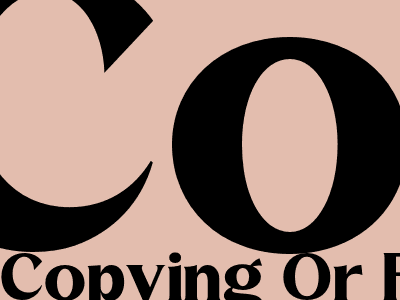
Copying Or Following A Model
Copying or Following a Model: The Fine Line of Idea Generation
Understanding the Ethical Quandary
The digital age has brought forth an abundance of content, ideas, and innovations. However, it also poses a challenge in determining the boundaries between original creations and mere replications. When it comes to content creation, the question arises: is it acceptable to copy or follow a model? The answer lies in understanding the ethical and legal implications involved.
Directly copying or plagiarizing someone else's work is a clear violation of copyright laws and ethical standards. However, inspiration and referencing existing ideas can be an integral part of the creative process. It is important to establish a clear distinction between imitating and stealing.
Inspiration vs Imitation
Inspiration:
* Borrowing concepts or styles without directly copying. * Using existing ideas as a springboard for new creations. * Giving credit to the original source.
Imitation:
* Replicating an existing work with minor or no changes. * Presenting someone else's ideas as your own. * Violating copyright laws and ethical guidelines.
Guidelines for Ethical Content Creation
To avoid plagiarism and ethical pitfalls, follow these guidelines: * **Properly Cite Sources:** Always give credit to the original authors when using their ideas or referencing their work. * **Substantial Changes:** Make significant alterations to the original idea to create a unique and original work. * **Avoid Direct Copying:** Refrain from copying verbatim from other sources. Use your own words to convey the concepts. * **Respect Copyright Laws:** Understand and adhere to the copyright laws that protect intellectual property rights. * **Seek Permission:** When in doubt, contact the original author and seek permission to use their work.
Benefits of Original Content
Creating original content has numerous benefits, including: * **Building Credibility:** Establishing yourself as a thought leader and subject matter expert. * **Attracting Engaged Audience:** Original content resonates with readers who seek unique and valuable information. * **Enhancing Search Engine Optimization (SEO):** Search engines favor websites with high-quality, original content. * **Protecting Intellectual Property:** Safeguarding your own creations from copyright infringement. * **Fostering Innovation:** Encouraging originality and the development of new ideas.
Conclusion
While inspiration and referencing are essential aspects of content creation, it is crucial to tread carefully and avoid plagiarism. By understanding the ethical guidelines and implementing proper citation practices, you can create original work that is both valuable and legally compliant.

Comments